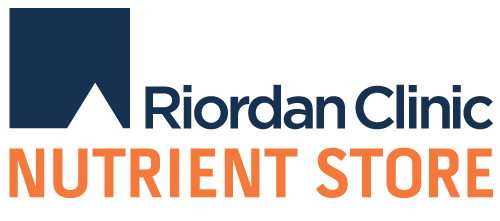Magnesium Decreases Hyperactivity in ADHD Children
Posted by Helen Saul Case on Feb 10th 2017
Magnesium deficiency is found more frequently in children with attention deficit hyperactivity disorder (ADHD) than in healthy children. In one study of ADHD children, magnesium deficiency was found in 95 percent of those examined (1). Does this warrant magnesium supplementation for hyperactive children? The answer is yes.
Supplementation with magnesium appears to be especially helpful for alleviating hyperactivity in children (2). In a group of children supplemented with about 200 milligrams (mg) per day of magnesium for six months, there was “an increase in magnesium contents in hair and a significant decrease of hyperactivity” compared to children in the control group who had not been treated with supplemental magnesium (3).
Magnesium Is Safe and It Works
A review that looked at studies done on magnesium for the treatment of ADHD in children concluded that although “studies supported that magnesium is effective for treating ADHD…until further strong evidences for its efficacy and safety are provided, magnesium is not recommended for treating ADHD.” (4) This is typical of modern “evidence-based” medical literature. Some medical professionals will ignore what is already known unless a sufficient number of double-blind randomized studies have been performed. Magnesium supplementation is safe and effective, and it is critically important for children who are deficient.
The safety of magnesium has been well established. There have been no deaths reported from magnesium supplementation. None (5). An overdose of magnesium may result in loose stool. This is temporary, and will go away once dosages are reduced or divided into smaller amounts of magnesium given throughout the day. Magnesium supplementation is safe and it is worth trying, especially when we consider the dangers of ADHD drugs.
ADHD Drugs Are Dangerous
Depending on which ADHD drug is being taken, side effects of overdose include mydriasis, tremors, anxiety, agitation, hyper-reflexia, headache, gastrointestinal upset, combative behavior, confusion, hallucinations, delirium, dizziness, dystonia, insomnia, paranoia, movement disorders, tachycardia hypertension, seizures, and yes, even hyperactivity, the very condition an ADHD drug is supposed to be treating. Oh, and they can kill you (6,7). Even if “fatalities are rare” (7), I imagine this brings little comfort to parents. Moreover, the most common side effects of ADHD drugs, taken as prescribed, are appetite loss, abdominal pain, headaches, sleep disturbances, diminished growth, hallucinations and psychotic disturbances (8). Magnesium produces none of these effects. And even though magnesium is both safe and effective, nowhere in the report from the American Academy of Pediatrics (AAP) Clinical Practice Guideline for ADHD is magnesium supplementation recommended (8).
When it comes to the potential for kids to die suddenly from taking their prescribed ADHD medication, concerns are dismissed by the AAP with statements like “evidence is conflicting as to whether stimulant medications increase the risk of sudden death” (8). One would hope that with this level of uncertainty about the risk of death, the medical advice would be against the use of ADHD medication. Instead, the recommendation from the United States Food and Drug Administration (FDA) is “continue your ADHD treatment as prescribed by a healthcare professional” (9). Just be sure to “talk to your healthcare professional about any questions you may have about ADHD medications.” Well, never has “talking about it” made medication any less dangerous.
Other Benefits of Magnesium
In addition to its effectiveness for treating hyperactivity, magnesium also benefits children in other profound ways: it can help kids sleep better at night, relieve discomfort from sore muscles and growing pains, relieve constipation, reduce anxiety, and reduce headache days (10).
“I have come to the conclusion that everyone could benefit from extra magnesium supplementation.”
– Carolyn Dean, MD, ND
Magnesium and Other Nutrients for ADHD
ADHD is not caused by a drug deficiency. Instead of giving drugs to our children, we should look to the benefits of providing them with optimal nutrition. Children with ADHD may benefit from optimal levels of several nutrients including vitamin D (11), iron (12), niacin (B3), pyridoxine (B6), vitamin C, and omega-3 fatty acids (13). In addition to removing refined sugar from the diet, avoiding artificial food dyes, and providing healthy food, pediatrician Ralph Campbell, MD, recommends a vitamin B complex supplement be given with breakfast, an additional 100 mg of B6 at another meal, and 200 mg or more of magnesium per day for ADHD children (13). Other helpful tips include limiting screen time and increasing exercise, especially in the outdoors.
Dosage
The recommended dietary allowance (RDA) of magnesium for children ages one to three is 80 mg per day. Children ages four to five: 130 mg magnesium per day. By age nine, our government recommends that kids should be getting (at least) 240 mg of magnesium per day. And at age fourteen, between 360 to 410 mg per day. Keep in mind, only about 30 to 40 percent of dietary magnesium is absorbed by the body (14). Remember, too much magnesium in a less-absorbable form can cause loose stool. This side effect can be prevented by reducing the amount of magnesium given and providing it in a more absorbable form. If larger total daily doses of magnesium are required, divide the dose into smaller amounts and give it multiple times throughout the day.
Form
Oral magnesium citrate is inexpensive and fairly well absorbed. Other useful, but more costly, oral forms of magnesium include magnesium glycinate, magnesium gluconate, magnesium taurate, magnesium malate, and magnesium chloride. Avoid magnesium oxide (it absorbs very poorly) and avoid both magnesium glutamate and magnesium aspartate (10). Magnesium sulfate is cheap and can be obtained transdermally by soaking in regular Epsom salt baths.
How We Get Magnesium into Our Children
Oral magnesium supplementation:
- We give our children a daily chewable magnesium tablet or oral liquid magnesium (many supplements also contain calcium)
- We give our children a crushed portion of an adult magnesium tablet given with something tasty like honey, applesauce, or ice cream
- For better absorption, we divide the dose and give magnesium between
Transdermal magnesium:
Our children take bi-weekly Epsom salt baths. We toss a handful or two of Epsom salt in their bath and have them soak for about ten to fifteen minutes. Our kids call it “water salt.”
Dietary magnesium:
Our children eat a plant-based diet which provides magnesium from many sources:
- We include organic vegetables like carrots, baby spinach, and beet greens in our homemade, fresh, raw veggie juice. They drink this 2 to 3 times per week.
- We include wheat germ in bread, pizza dough, and smoothies
- Cashews are offered for their snacks
- We sprinkle sunflower seeds on their salads
- We eat fish often
- We include black beans and pinto beans in our tacos
- We often have bean and lentil soups
- They love guacamole
- They eat lots of bananas and berries
- They eat whole milk yogurt
- They like peanut butter
- They eat oatmeal, brown rice, and potatoes
To see the magnesium content many foods, you may wish to visit http://www.whfoods.com/genpage.php?tname=nutrient&dbid=75
Our children do not suffer from ADHD. But we don’t like to wait around for nutritional problems to show up. We see to it that our kids get the nutrients their growing bodies need. “Don’t take chances; take vitamins and minerals” is our motto. Always will be.
OMNS Assistant Editor Helen Saul Case is the author of The Vitamin Cure for Women’s Health Problems, and Vitamins & Pregnancy: The Real Story. She is coauthor of Vegetable Juicing for Everyone. Her newest book,Orthomolecular Nutrition for Everyone, will be available March 2017.
This article was reprinted with the author’s permission. It was originally published Nov 23, 2016 on the Orthomolecular News Service and can be viewed here: orthomolecular.org/resources/omns/

